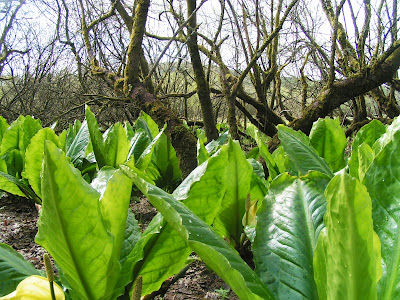Working Holiday May 2013
Ever wanted to wake up in a beautiful location, and enjoy a fun-packed day doing exciting conservation activities, whilst making great new friends in the process with one of our working holidays?
Well this is what these guys did, taking part and getting active on one of our working holidays. A fun packed week with twists and turns but a fantastic experience, learning about this part of the Lake District, doing some great conservation work and getting the chance to have a go and enjoy a brilliant outdoor activity.
 |
| Fantastic hard working team |
The week was spent on a project at
Allan Bank Cumbria. Opened to the public for the first time ever in March 2012, Allan Bank is a place where people are able to relax in front of a warm fire with a cup of tea while the children play. Once home to William Wordsworth and National Trust founder Canon Rawnsley, Allan Bank was rescued from the ravages of fire in 2011. The house is partially restored and undecorated.
 |
| Allan Bank |
The project for the week was to clear and prepare a large area of the garden ready for grass seeding. This area is quite visible to our visitors as they approach the house. Trees have been removed from the crag behind; rhododendron and laurel had encroached this area of the garden making it unusable.
 |
| Leaves, roots, logs and waste all have to be cleared by the team |
 |
| A bonfire to burn some of the vegetation |
|
The team started by raking and collecting leaves, cutting out old rhododendron root systems and picking though the soil to remove stones and rocks. This area of the garden had become overgrown with rhodos and laurels trees which had also grown up against the chapel.
 |
| Relics from the past were found |
 |
| Iron fence |
Not only had it become over grown and deserted but throughout the life of the house, this area may have been used as a dumping ground. Fences, bottles, tiles and much more was unearthed as we prepped the site.
 |
| More fencing |
 |
| A little help was needed |
|
 |
| Wheelbarrows at the ready |
 |
| Front line work |
Once the stones, roots and leaves had been collected or chopped back, it was time to gently turn over the soil ready for grass seeding.
 |
| Preparing the seed |
 |
| Area covered with Rye grass seed |
 |
| Seeds being sown |
We use a fast growing Rye grass seed mix which will germinate and establish relatively quick. This will help stabilise the banking and slow down weed growth. This type of seed sowing will also allow us to add wild flowers species and native bulbs in the future.
 |
| Finished area. We just need sunshine and showers; shouldn't be to hard in the Lakes |
 |
| Proud team of volunteers who worked very hard |
|
Our holidays are not just about great conservation work. The week is also about trying new activities and getting your feet wet. With the help of Tower Wood Outdoor Eduction Centre we are able to let the group try something new in the shape of water sports.
 |
| Tower wood on the shores of Windermere |
There is nothing like bobbing about on the water using various water crafts. The day was warm, dry and clear, a perfect combination in which to have fun and view the Lake District fells from a different perspective.
 |
| Loz, one of the fantastic Outdoor instructors |
Canadian canoes, kayaks, and fun boats were all on the menu for the team to have a go and experience something new. With the great weather and the back drop of the fells it made a fantastic day.
 |
| Experiencing new activities |
 |
| Canadian canoe, the traditionalist's choice |
 |
| Clear skies with Fair Field in the back ground |
 |
| Great Fun |
 |
| Fast moving on the open water |
 |
| Time to take in the views |
 |
| Getting the hang of it |
The Volunteers had a fantastic day with Loz and the Tower Wood team. The Volunteers left having a great adventure but ultimately trying out water sports, which we hope they may try again.
A huge thank you goes to Loz and all at Tower Wood for providing the expertise, equipment and jaw dropping facilities.
Tower Wood Outdoor Education Centre is set in 12 magnificent acres of lawns and woodland, extending from the beautiful Edwardian house down to the eastern shore of Windermere. The site looks across the Lake to the high fells of the Lake District and has an enviable and easily accessible position.
The centre has over 40 years experience of delivering safe, high quality outdoor adventure experiences for all. With its wonderful facilities, Tower Wood can offer a wide range of land and water based activities.
If you have been enthused about our working holidays blog and want to know more please click Working Holidays


















































